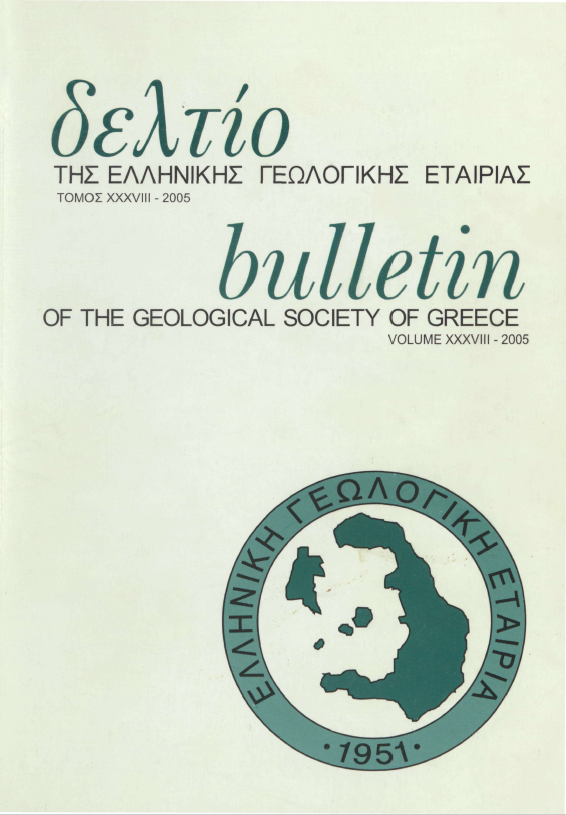Μορφολογία της νήσου Τήνου

Περίληψη
Μελετάται η γεωμορφολογία της νήσου Τήνου. Η Τήνος είναι ημιορεινή. Η μορφολογία του νησιού καθορίζεται κυρίως από την επιφανειακή εξάπλωση των λιθολογικών σχηματισμών. Χαρακτηριστικό της μορφολογίας είναι η ε'ντονη ασυμμετρία μεταξύ του ΝΔ και ΒΑ τμήματος εκατέρωθεν του κύριου υδροκρίτη κατά μήκος του νησιού, ο οποίος συμπίπτει με τον άξονα των πτυχώσεων και διαχωρίζει δυο περιοχές με διαφορετικές μορφές ανάγλυφου. Οι διαφορές αφορούν επίσης στο ανάγλυφο, στην ανάπτυξη του υδρογραφικού δικτύου, στη μορφή του κοιλαδικού συστήματος, στις μορφολογικές κλίσεις και στη μορφή των ακτών. Η διεύθυνση των κοιλάδων είναι γενικά εγκάρσια προς τον επιμήκη άξονα του νησιού, ο οποίος συμπίπτει με τον άξονα των πτυχώσεων. Χαρακτηριστική επίσης είναι η σφαιροειδής αποσάθρωση των γρανιτικών πετρωμάτων και τα Tafoni τόσο στους γρανίτες όσον και στους σχιστόλιθους καθώς και η κυψελώδης αποσάθρωση. Διαπιστώθηκαν επιφάνειες ισοπέδωσης με μέσα υψόμετρα 100, 200, 300-350, 410-430 και στα 600, που όπως φαίνεται πρέπει να είναι χαρακτηριστικά των Κυκλάδων αφού έχουν παρατηρηθεί και σε άλλα νησιά.
Λεπτομέρειες άρθρου
- Πώς να δημιουργήσετε Αναφορές
-
ΛΕΙΒΑΔΊΤΗΣ Γ., & ΑΛΕΞΟΥΛΗ-ΛΕΙΒΑΔΙΤΗ Α. (2001). Μορφολογία της νήσου Τήνου. Δελτίο της Ελληνικής Γεωλογικής Εταιρείας, 34(1), 389–396. https://doi.org/10.12681/bgsg.17041
- Ενότητα
- Νεοτεκτονική και Γεωμορφολογία

Αυτή η εργασία είναι αδειοδοτημένη υπό το CC Αναφορά Δημιουργού – Μη Εμπορική Χρήση 4.0.
Οι συγγραφείς θα πρέπει να είναι σύμφωνοι με τα παρακάτω: Οι συγγραφείς των άρθρων που δημοσιεύονται στο περιοδικό διατηρούν τα δικαιώματα πνευματικής ιδιοκτησίας επί των άρθρων τους, δίνοντας στο περιοδικό το δικαίωμα της πρώτης δημοσίευσης. Άρθρα που δημοσιεύονται στο περιοδικό διατίθενται με άδεια Creative Commons 4.0 Non Commercial και σύμφωνα με την οποία μπορούν να χρησιμοποιούνται ελεύθερα, με αναφορά στο/στη συγγραφέα και στην πρώτη δημοσίευση για μη κερδοσκοπικούς σκοπούς. Οι συγγραφείς μπορούν να: Μοιραστούν — αντιγράψουν και αναδιανέμουν το υλικό με κάθε μέσο και τρόπο, Προσαρμόσουν — αναμείξουν, τροποποιήσουν και δημιουργήσουν πάνω στο υλικό.





